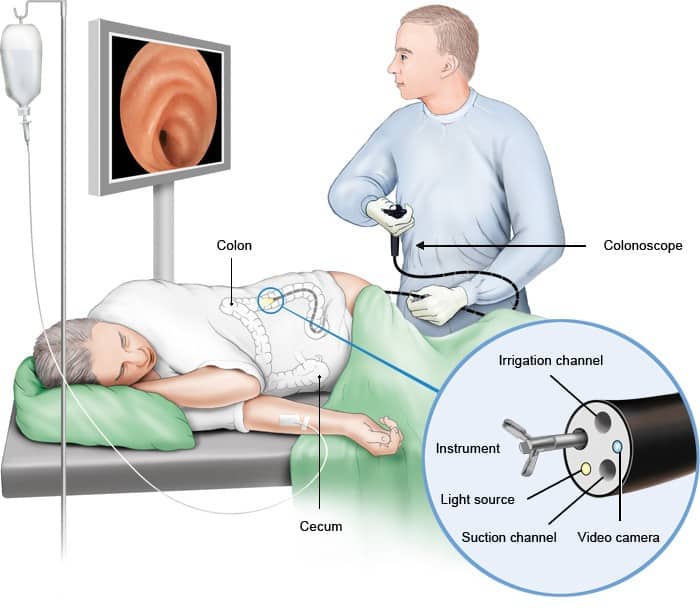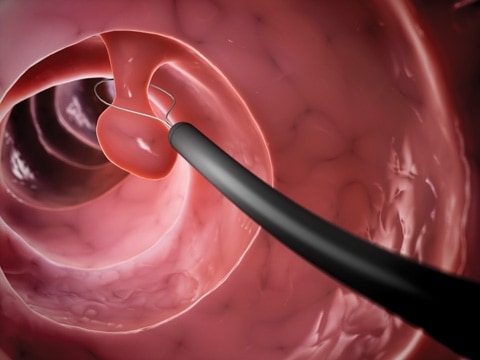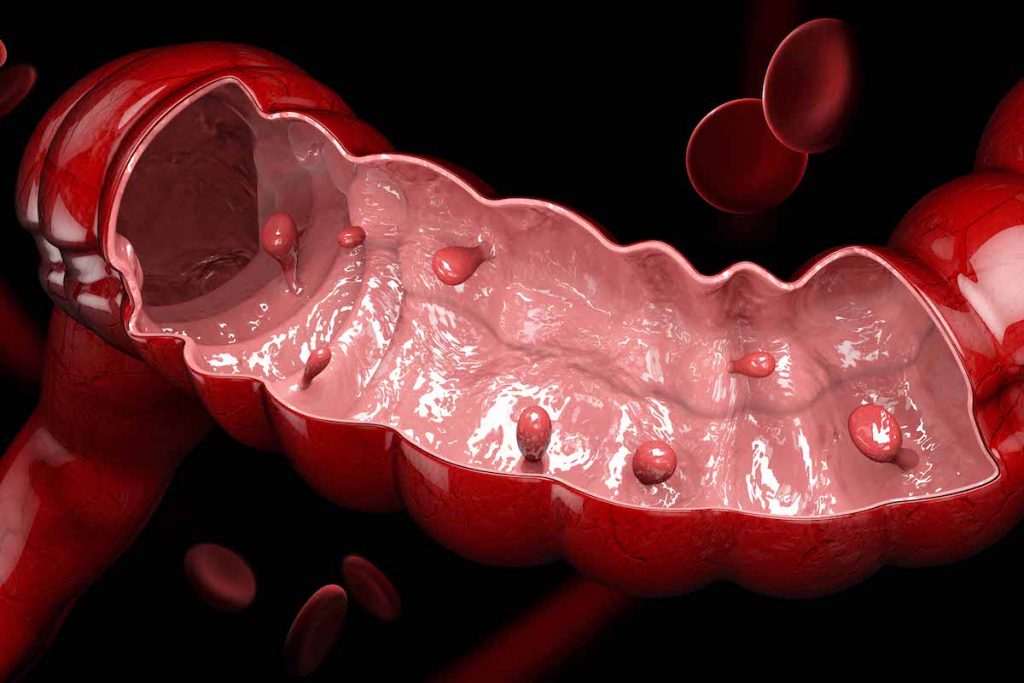I work in a hospital unit where over the years, I have assisted in several thousand colonoscopies with many different doctors. Our patients comw from all walks of life: old, young, trucker, prisoner, senator. What they all had in common was the fact that they came to us to have one of the easiest exams one can expect at some point to need. In fact, colonoscopy is front line test for colon cancer, polyps, or other bowel symptoms that may trouble a person.

I am going to discuss here some of the basic findings that your doctor will be looking for. Although for some, the screening colonoscopy is recommended as a matter of course at the age of fifty, there are many other reasons one may need to come in for this test. For our unit, bleeding is the most common reason, followed by abdominal pain, and changes in typical bowel habit. What one may not expect is that weight loss, anemia, or even lost objects are frequently cited pre exam diagnoses.
In its most basic form, a colonoscopy is done by a doctor trained in gastoenterology, which includes the everything from the mouth to the end of the colon, either in a hospital or office setting. Patients are given medication to sleep through the test or remain relaxed enought to finish the colonoscopy. During the test, the scope is passed into the large bowel, and is pushed through this area until the end is reached. At that point, the real work of looking comes in as it is slowly pulled out. A video monitor allows the doctor and staff to observe the inside portion of the colon in order to identify problems.

One of the most common finding is a colon polyp. A polyp is something like a skin tag on the wall of the colon in which a particular area grows a extra tissue into the lumen. Polyps can be tiny or large depending on how long they have been there. Sometimes polyps are flat; others my be connected to a long stalk. These may grow at any point in the colon.
Should a polyp or other lesion be found, tissue is taken and the are treated if neccesary. This may include burning, injecting, or using an small electrical current on the tissue to help it stop bleeding. The tissue removed is often very tiny, such as the size of the tip of a pen. From the colonoscopy room, the tissue is sent to a pathologist who will examine the specimen under a microscope. This serves as a screening method for colorectal cancer, and the results come back quite quickly.

A second commonly seen problem is diverticulosis. ‘Tics’, as they are called, are small pouches inside the bowel on the walls between muscles. They are a common feature due to american diets, and one of the reasons your doctor may recommend fiber in the diet. Just as evey person is different, so are tics. For instancce, one may seen a sinle lonely diverticula, while others with severe disease will have a colon resembling swiss cheese. When material floats by and becomes trapped inside the tic, it dries out and can become a source of irritation and infection. Hence, the term, “diverticulitis”.
The doctor may see areas of inflammation which look like reddened spots. Other segments may show ulcerations. Many of our doctors will take a picture of the area where the appendix is or was. This is in the beginning of the large bowel, known as the cecum, and the opening itself is called the appendicieal orifice. Biopsies from the spots may be taken to determine infection or another disease process.

While not often seen, colonoscopy can be used to remove objects. Our unit has taken out a shot glass, perfume bottle, and in one instance, a cucumber. Placing such objects is truly more dangerous than amusing to the staff because if our work is unsuccessful, major surgery is the nect step. It is a memorable moment for everyone involved. Tools used to attempot such removals are the same as for polyps: snares, baskets, or forceps that can bite and grab.
Colonoscopy has many uses and benefits for a person with health problems. Bleeding sections can uncover causes of anemia, precancerous polyps can be removed before they become colon cancer, and infected areas can explain bouts of diarrhea that need a plan of care to fix. Although a few are listed here, there are a number of other problems that colonoscopy can shed a light on.


















